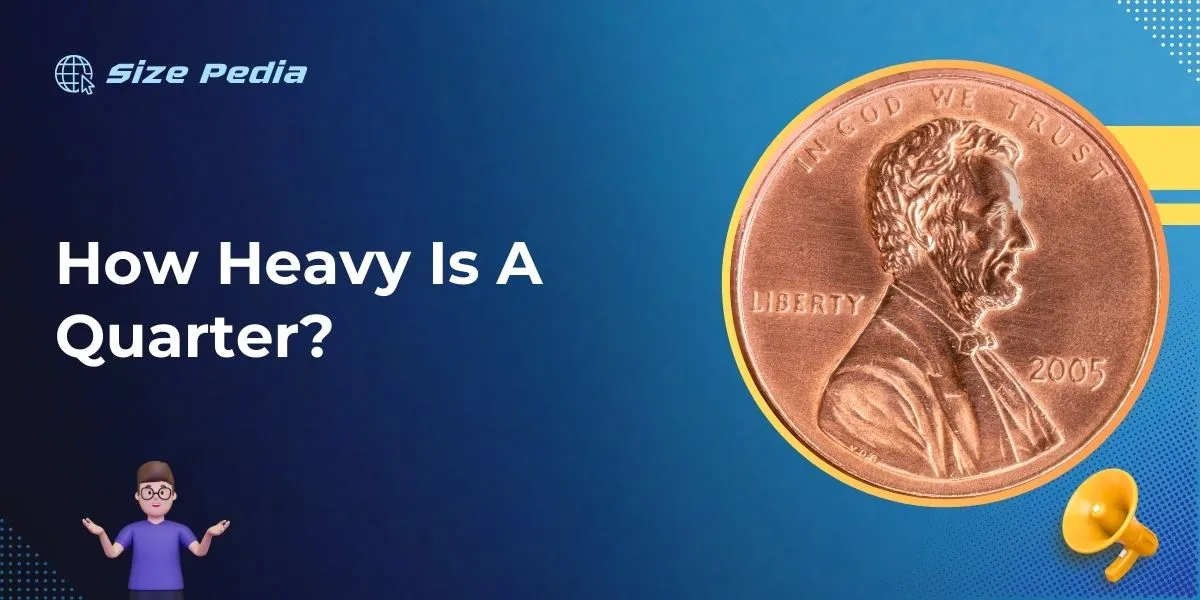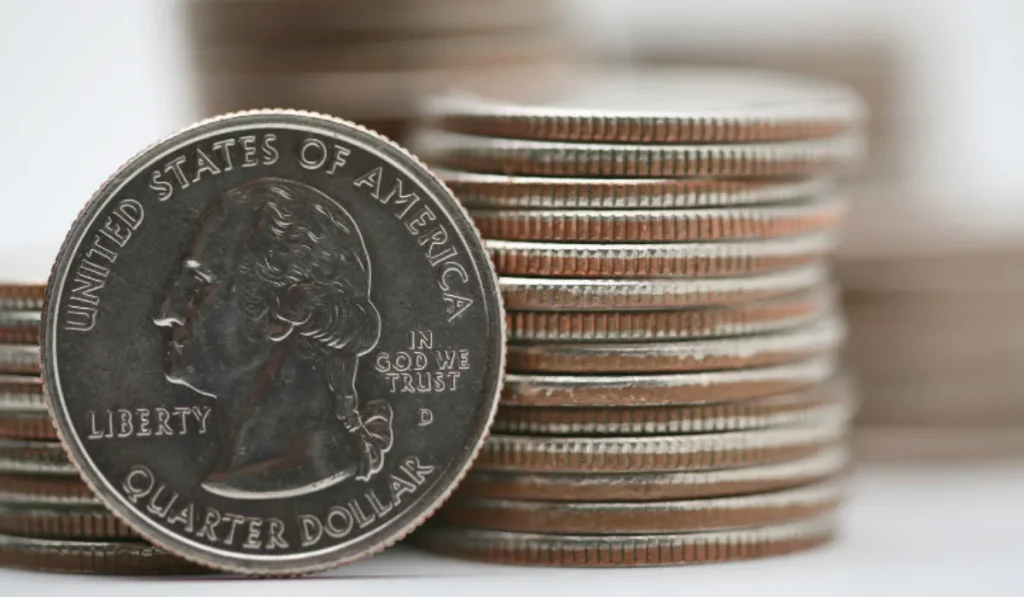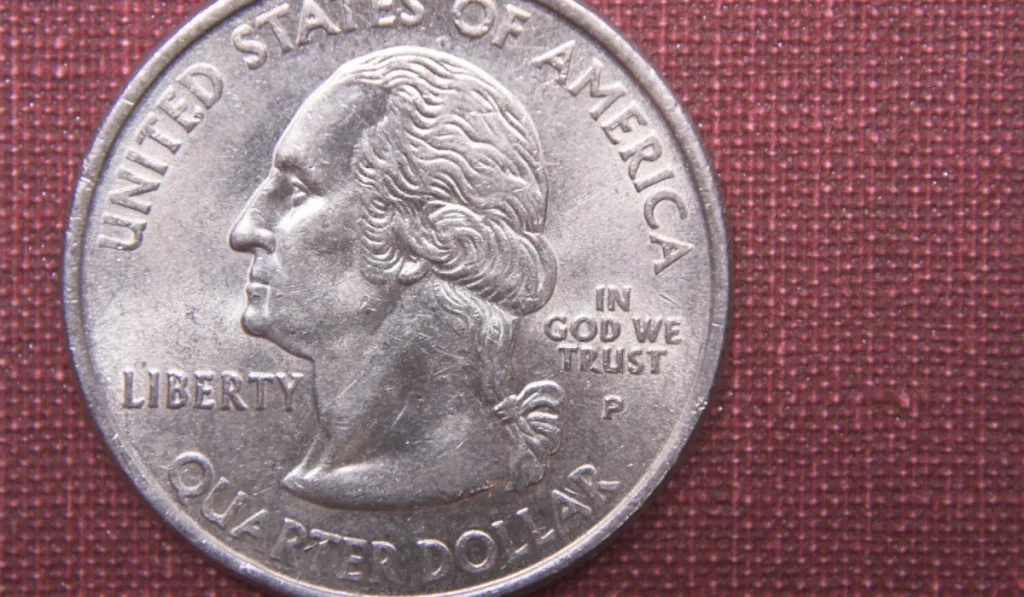A standard U.S. Quarter weighs 5.67 grams. This measurement equates to 0.2 ounces.
Understanding the weight of a quarter is essential for various reasons, including commerce, coin collecting, and when machines require exact change.
Quarters hold significant value as they are common in everyday transactions. These coins, composed primarily of a nickel-copper blend, have been a staple in American pockets since their introduction.
They feature a distinctive size and ridged edge, making them easily recognizable. The weight of a quarter has been consistent since 1965 when the composition changed from silver to the current copper-nickel alloy.
Whether for use in vending machines, transit systems, or as part of a collector’s horde, the quarter’s consistency in weight is key to its utility in daily life.
For those dealing with large amounts of currency, knowing the mass of these coins can be crucial for assessments and transactions.

Actual Heft Of A Quarter
The Actual Heft of a Quarter may seem inconsequential in daily transactions. Yet, it’s the standard for business and coin collectors.
Knowing the precise weight offers insight into a coin’s authenticity and condition. Let’s unwrap the details of a quarter’s mass.
A Dive Into Coinage Weight Standards
The history of U.S. coinage is a tale of precision and practicality. Initially, each denomination had a corresponding weight standard, a measure of trust in commerce.
Over time, weight standards changed, but remained integral to the coin’s worth. Below is a snapshot of these standards:
- Silver Era: Quarters weighed 6.25 grams up to 1964.
- Clad Coinage: Post 1965, a reduced weight of 5.67 grams was established.
Measuring The Mass Of Modern Quarters
The modern quarter comes from the era of clad coinage. A composition of nickel and copper gives this quarter durability.
A precise balance is struck to maintain the standard weight. The exact figures are as tabled below:
| Year | Material | Weight (grams) |
|---|---|---|
| 1965 – Present | Nickel-copper clad | 5.67 |
Manufacturing Quarters

The creation of quarters is a precise art. A specific weight is vital for vending machines and coin-operated devices.
The United States Mint ensures each quarter strikes the perfect balance.
Materials That Add Up To The Weight
Currency quarters consist mainly of two materials. These are copper and nickel. We see only the nickel, which coats the outside. Copper, heftier than nickel, forms the core.
| Material | Percentage |
|---|---|
| Copper | 91.67% |
| Nickel | 8.33% |
Together, copper and nickel give the average quarter a weight of 5.670 grams.
Precision In Minting: Ensuring Consistency
Quarters must match in weight and size. The U.S. Mint uses modern technology to keep coins consistent.
Each step is checked and double-checked. The slightest variation leads to big problems.
- Punching blanks from long metal sheets
- Measuring weight and size of blanks
- Pressing designs with tons of pressure
High standards ensure quarters work everywhere, from arcade games to laundry mats.
Historic Quarters Vs. Today’s Coin

When talking about USA quarters, the history is just as rich as the coin’s usefulness. There’s been a transformation not only in the way these coins look but also in how much they weigh.
Let’s delve into the differences between historic quarters and the quarters we use today.
Evolution In Design And Weight
Initially, quarters were made of silver, a heavy and valuable material. The Coinage Act of 1792 set the weight of quarters at 6.01 grams.
The composition was 90% silver and 10% copper. This ratio remained unchanged for almost 170 years.
However, in 1965, a significant change occurred. The USA introduced the Copper-Nickel Clad Coinage.
Today’s quarters weigh 5.67 grams and are composed of a copper core with a mix of nickel and copper for the outer layer.
This shift reduced the production costs of the coins, and it made them less appealing to metal hoarders.
- 1792-1964: Silver Quarters – 6.01 grams, 90% silver content
- 1965-Present: Clad Quarters – 5.67 grams, copper and nickel
Collectible Quarters: Do They Weigh More?
While most quarters have a consistent weight, collectible quarters can be an exception. Special edition coins, like those from the 50 State Quarters program, are minted to the standard 5.67 grams.
However, silver proof or commemorative quarters made for collectors sometimes go back to the pre-1965 standards.
| Collectible Quarter Type | Material | Weight |
|---|---|---|
| Silver Proofs | 90% Silver | 6.25 grams |
| Clad Proofs | Copper-Nickel | 5.67 grams |
Silver proof quarters weigh more because of their higher silver content, a direct nod to historic quarters. This makes them not only heavier but also often more valuable to collectors.
Why The Weight Of A Quarter Matters?
Understanding the weight of a quarter is crucial. It may seem trivial, but it holds immense significance in everyday life.
Many devices count on this consistency to function correctly. Here’s why these slivers of metal carry more weight than you might think.
Functional Role In Commerce
Commerce relies on standardized weights and measures to operate smoothly. Quarters have a precise weight for a reason:
- Ensures fairness in transactions.
- Facilitates accuracy in financial operations.
- Helps in maintaining integrity in trade.
- Streamlines the counting processes.
Weighty Implications For Vending Machines And Devices
Vending machines and other coin-operated devices are finely calibrated to identify a quarter’s weight. They only work with coins of the correct weight. An incorrect weight may cause:
| Issue | Device Response |
|---|---|
| Too Light | Device rejects coin |
| Too Heavy | Potential machine jam |
The correct weight of a quarter ensures:
- Devices accept valid currency.
- Prevents losses due to machine error.
- Promotes consistent customer experience.
Comparing Quarters To World Coinage
The humble quarter, part of daily life in the United States, holds its own tale. When examining its place among global coinage, its weight becomes an intriguing focal point.
How does this familiar coin compare with those from other countries? Let’s dip into the world of coin weights and see where the U.S. quarter stands.
Global Coin Weight Standards
Coin weights can be as diverse as the nations they come from. Standards vary widely, with some countries opting for lightweight materials, while others prefer a more substantial feel.
Here is a glance at how different coins weigh in:
| Country | Coin | Weight (grams) |
|---|---|---|
| United States | Quarter | 5.67 |
| United Kingdom | One Pound | 8.75 |
| European Union | Two Euro | 8.50 |
| Japan | 100 Yen | 4.80 |
| Canada | Quarter | 4.40 |
This table highlights the weight differences between several common coins from around the globe.
It reveals interesting variations. Notice the U.S. quarter’s unique position with its specific weight.
Lightest And Heaviest Coins
A journey through international mints uncovers some extreme examples. Here we spotlight the lightest and heaviest coins in circulation:
- Lightest: The 1 Yen coin from Japan, at a mere 1 gram, barely feels there.
- Heaviest: A hefty coin is the 100 Pesos from Chile, tipping the scales at 17 grams.
Such a stark contrast offers insight into how coins can vary. These weights reflect not just economic choices, but cultural and historical influences as well.
FAQs About the Weight of a Quarter
What Is The Weight Of A Us Quarter?
A US quarter weighs 5. 670 grams. It’s made of a combination of metals, primarily copper and nickel, giving it that specific weight.
Can Quarters Vary In Weight?
Quarters can have slight variations in weight due to wear and tear. However, new quarters should consistently weigh 5. 670 grams, as determined by the US Mint specifications.
What Are Quarters Made Of?
US quarters are composed of a mix of 75% copper and 25% nickel. This combination surrounds a pure copper core, contributing to its standard weight and durability.
Why Is The Weight Of A Quarter Important?
The weight of a quarter is crucial for vending machines and devices that validate coins. Accurate weight ensures authenticity and proper functioning of these machines.
Conclusion
Understanding a quarter’s weight is surprisingly insightful. At 5. 670 grams, or about 0. 2 ounces, each coin is a small part of daily life, yet it carries historical and manufacturing significance.
Remember these figures whether you’re a collector, a curious mind, or handling cash; they reflect the careful balance between practicality and tradition in our currency.
Resources:
https://www.usmint.gov/coins/coin-medal-programs/circulating-coins/quarter
https://home.treasury.gov/policy-issues/financing-the-government/quarterly-refunding
